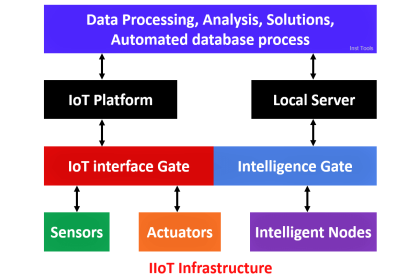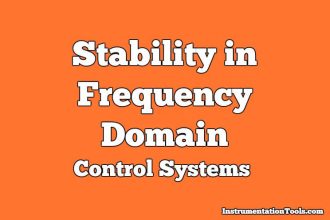The electromagnetic spectrum is a wide range that encompasses all types of electromagnetic waves with different frequencies and wavelengths. One of the widely utilized wave categories within this spectrum includes radio waves and microwaves. While they may sound similar, there are significant differences between them.
In this article, we will learn the difference between radio frequency and microwave frequency.
What is Transmission Media?
To transmit data, a medium is required. This medium serves as the channel through which data is communicated from one end to another. There are two types of transmission media: guided and unguided.
Guided media refers to physical mediums that can be observed and properly terminated from one end to another, such as wires and cables.
Unguided media, on the other hand, involves electromagnetic waves, which are not visible and do not require physical termination.
Therefore, in this article, as we focus on studying the difference between radio and microwaves, we will delve further into the concept of unguided media.
What is the Electromagnetic Spectrum?
Before we proceed, let us first understand the basics. Our world is surrounded by a wide variety of electromagnetic waves, some of which are visible to us while others are not. This range of frequencies is known as the electromagnetic spectrum. These waves have different wavelengths and frequencies, starting from 1 Hz and extending up to 1025 Hz.
This spectrum can be represented on a scale where different types of frequencies are grouped together. As the frequency increases, the wavelength decreases.
The electromagnetic spectrum follows the following order:
- Gamma rays (nuclear reactions)
- X-rays (medical applications)
- Ultraviolet (sun)
- Visible light (tube lights, bulbs, and other visible sources of light)
- Infrared (night vision)
- Microwaves (microwave ovens, study of galaxies and stars)
- Radio waves (TV, mobile communication)
This order begins with high-frequency, low-wavelength waves and ends with low-frequency, high-wavelength waves. Each type of wave within this range has its own specific set of frequencies.
The electromagnetic spectrum encompasses this entire scale of waves. Studying this spectrum is crucial as it allows us to determine the frequencies required for specific applications.
What is a Radio Wave?
Radio waves have the lowest frequency range. Radio waves fall within the range below 3 x 1011 Hz, with wavelengths greater than 1 mm. However, in practical terms, radio waves are generally considered to start from 3 kHz to 300 GHz. These waves are generated in conducting wires through the accelerated movement of charges.
The primary application of radio waves is in radio and television communication systems. They are easily generated, can penetrate objects (which makes them ideal for communication as data can travel anywhere), and are omnidirectional (able to travel in all directions simultaneously).
What is a Microwave?
Microwaves have higher frequencies compared to radio waves. Microwaves fall within the range of 3 x 1011 to 1013 Hz, with wavelengths ranging from 1 mm to 25 μm. However, in practical terms, microwaves are generally considered to start from 300 kHz to 300 GHz. The frequency of microwaves is generated through specialized vacuum tubes such as klystrons and magnetrons.
The main applications of microwaves include military aircraft radar and antenna systems. Similar to radio waves, microwaves can penetrate objects, but they are predominantly unidirectional. They require fixed antenna setups to guide the waves along specific channels.
Difference between Radio Waves and Microwaves

Let’s now examine the key differences between radio waves and microwaves.
- Radio waves have lower frequencies and longer wavelengths compared to microwaves.
- Radio frequencies are commonly associated with AM/FM transmission, while microwaves are used in a broader range of applications, such as heating and high-bandwidth data transmission systems. Microwaves are renowned for their precision and efficiency, particularly in aircraft and radar systems.
- Radio waves are omnidirectional, whereas microwaves are unidirectional.
- Radio waves can cover greater distances compared to microwaves since microwaves face limitations due to their inability to operate with antennas and the curvature of the Earth, which can obstruct microwave transmission.
- Radio waves are generated when charged particles (ions) are rapidly accelerated and decelerated in the air. On the other hand, microwaves are produced using klystrons or magnetrons, where radio waves propagate in a magnetic field to generate microwaves.
- Radio waves are usually propagated through the sky mode, while microwaves primarily utilize line-of-sight propagation.
In this way, we understand the difference between radio waves and microwaves.
If you liked this article, then please subscribe to our YouTube Channel for Electrical, Electronics, Instrumentation, PLC, and SCADA video tutorials.
You can also follow us on Facebook and Twitter to receive daily updates.
Read Next:
- Non-Linear Devices
- Power Supply Principle
- How to Test a Transistor?
- Types of Noise in Electronics
- Zener Diode Voltage Regulators

















Dear Viral,
I’m Kamran, a telecommunications engineer and also a content writer. During my search for an item, I found your article in the web. The title was exciting but a bit strange because I think “Difference between Microwaves and Radio Waves” cannot be completely correct! Based on my academic knowledge, Microwaves are part of Radio Waves, as a subset of whole radio waves spectrum. Therefore there is not difference between them! But, we can talk about specific features of microwaves as a type of radio waves.
https://en.wikipedia.org/wiki/Microwave
Also, in the body of the article I found some misunderstanding about the subject.
I believe the article needs to review and revise again to be a good reference for readers. Good luck!
best regards,
Kamran